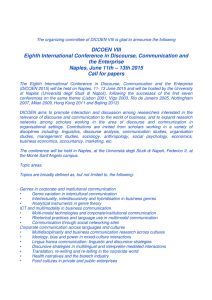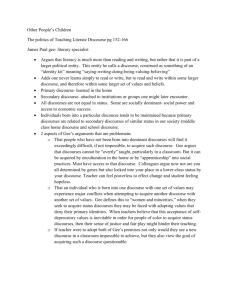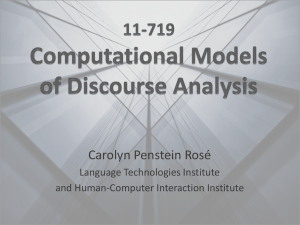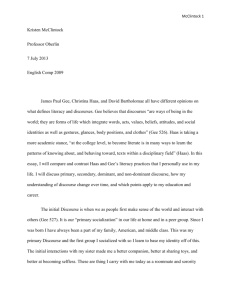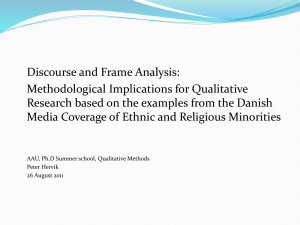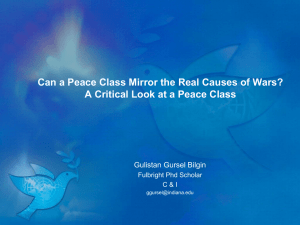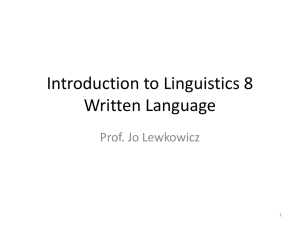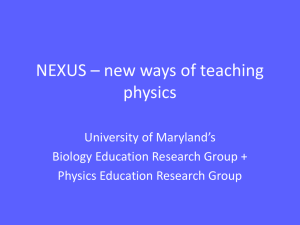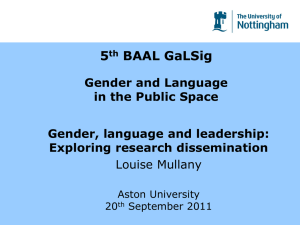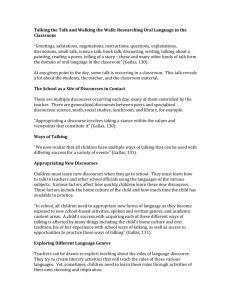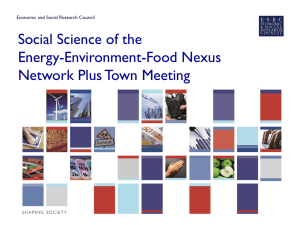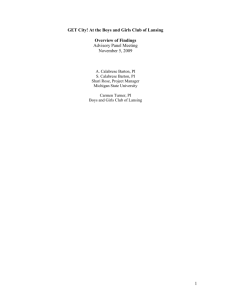Nexus Analysis Discourse and the Emerging Internet
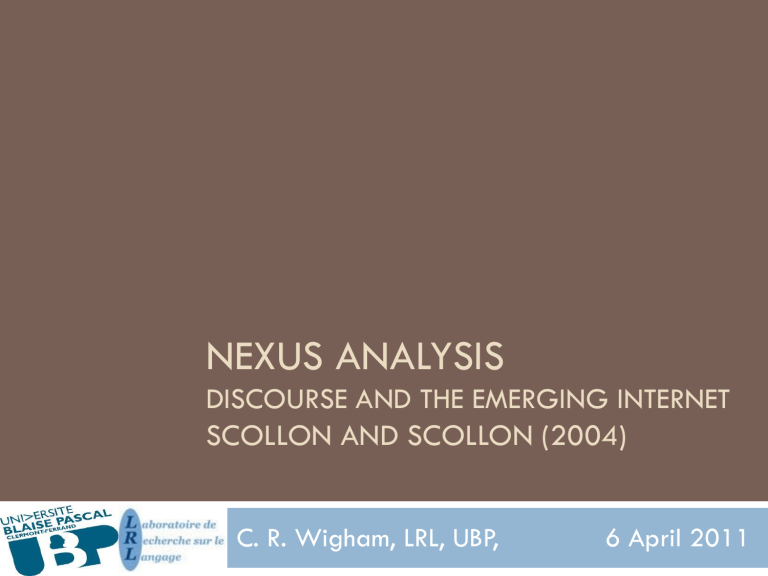
NEXUS ANALYSIS
DISCOURSE AND THE EMERGING INTERNET
SCOLLON AND SCOLLON (2004)
C. R. Wigham, LRL, UBP, 6 April 2011
Overview of the book
methodological guidebook
ethnography, discourse analysis, action research
use of computer mediated communication to improve Native Alaskan’s access to higher education
(1978 – 1983)
how people, places, discourses and objects come together to facilitate action and social change
Discourse and technology
inseparable
change in technologies of discourse = change in discourse itself
nexus analysis = method discourse social political historical technology
Nexus
“Repeated site of engagement where some type of social action is facilitated by a relatively consistent set of social processes”
site of nexus of practice social practice engagement
Nexus Analysis
what is said, how and why cycles of discourse nexus of practice
close analysis of moment under analysis historical analysis of discourse cycles that intersect at that moment analysis of anticipations
Three stages of nexus analysis
Engaging particular nexus of practice – face to face
Navigating understanding the discourses within the classroom
Changing introducing computer-mediated-communication new nexus of practice
Engaging I
establish the social issue to be studied
find the crucial social actors
observe the interaction order
determine the most significant cycles of discouses
establish zone of identification
Engaging
zone of identification (Burke)
social issue –lack of access
face to face and distance different accommodations of the historical bodies, interaction order and distribution of discourse
Navigating I
map cycles of people, places, discourses, objects and concepts which circulate through micro-semiotic ecosystem historical body overt + covert discourses motives analysis objects as mediational tools links and interactions transformations
Navigating
Platform event + meeting panopticon event
Interaction order: interpersonal distances teacher = owner of space
Discourses in place: other discourses deselected for attention actions to transfer discourse type
Historical bodies: teacher – student
Opening up circumference of analysis
Micro-rythmns of social interaction
Participation in the structure of the institution mapping of the gate-keeping situations locating gates –Burke’s grammar of motives conventions of expressions differ
Changing I
difference with traditional ethnographic research
re-engagement
what actions will transform discourses into actions and actions into new discourses and practices?
Changing
Interaction order: primary and secondary
Discourses in place: distributed discourses short discourse texts topical weave
Historical bodies: expert-novice role in flux discourse forms from historical body = rare
Conclusion
theoretical, methodological framework
Need to follow all the potentially relevant cycles that emanate from a focal interest
Research is action and all action is itself positioned at the nexus of various relevant cycles
Nexus analysts embrace their embeddedness in places of study and try to improve those places
